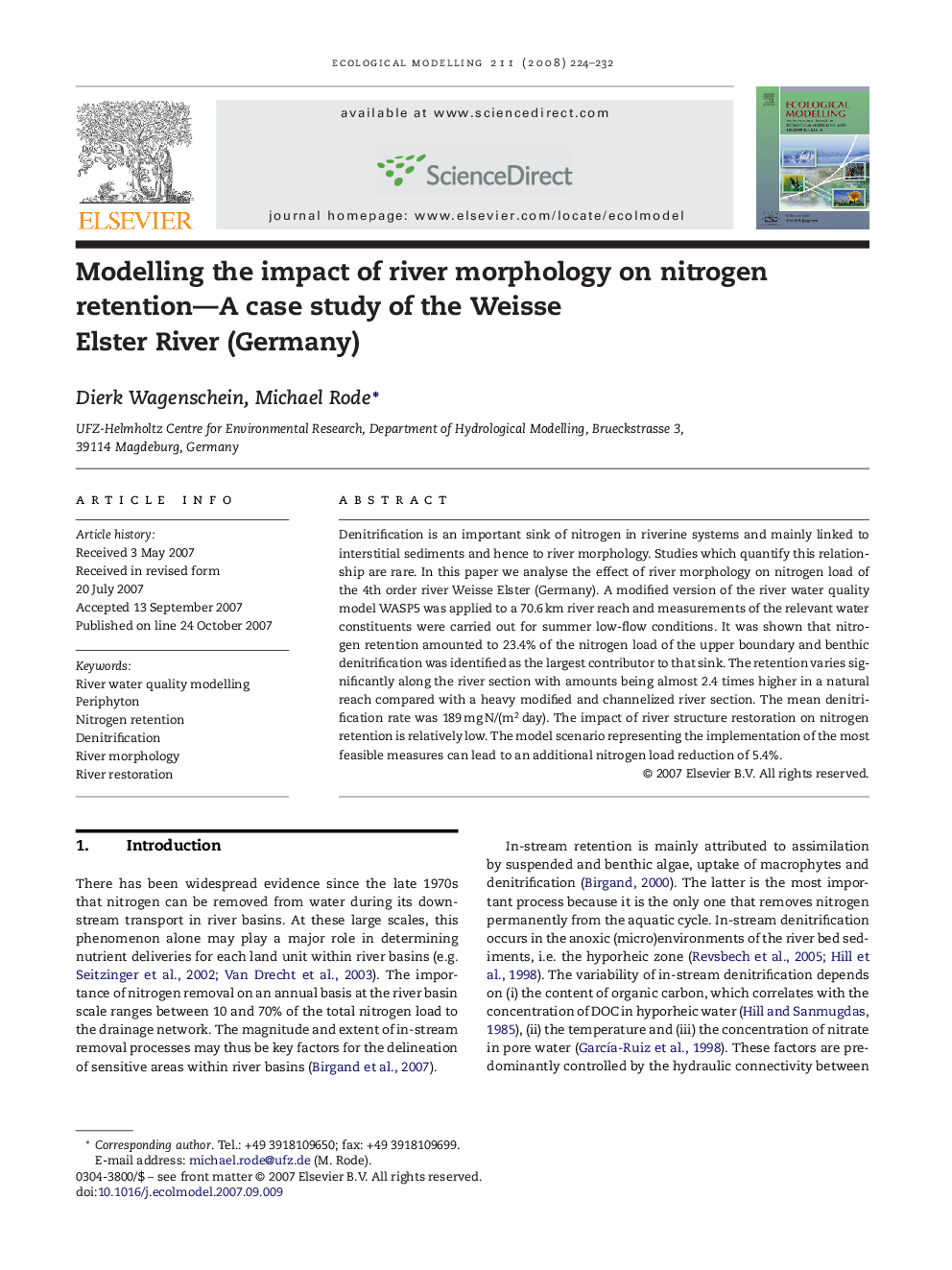| Article ID | Journal | Published Year | Pages | File Type |
|---|---|---|---|---|
| 4378272 | Ecological Modelling | 2008 | 9 Pages |
Abstract
Denitrification is an important sink of nitrogen in riverine systems and mainly linked to interstitial sediments and hence to river morphology. Studies which quantify this relationship are rare. In this paper we analyse the effect of river morphology on nitrogen load of the 4th order river Weisse Elster (Germany). A modified version of the river water quality model WASP5 was applied to a 70.6 km river reach and measurements of the relevant water constituents were carried out for summer low-flow conditions. It was shown that nitrogen retention amounted to 23.4% of the nitrogen load of the upper boundary and benthic denitrification was identified as the largest contributor to that sink. The retention varies significantly along the river section with amounts being almost 2.4 times higher in a natural reach compared with a heavy modified and channelized river section. The mean denitrification rate was 189 mg N/(m2 day). The impact of river structure restoration on nitrogen retention is relatively low. The model scenario representing the implementation of the most feasible measures can lead to an additional nitrogen load reduction of 5.4%.
Keywords
Related Topics
Life Sciences
Agricultural and Biological Sciences
Ecology, Evolution, Behavior and Systematics
Authors
Dierk Wagenschein, Michael Rode,
